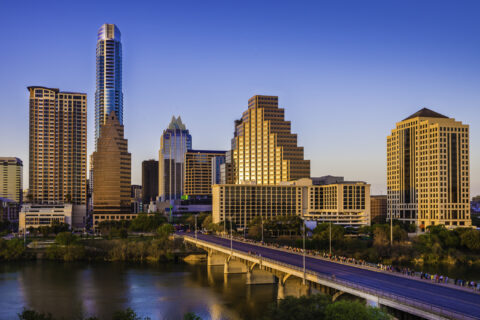Historic federal funding in a cleaner, more resilient economy coupled with global pressure to act necessitates a climate-ready workforce. If bold climate action is taken by 2030, U.S. cities could create nearly 20 million sustainable jobs, of which most would be developed within cities themselves. While millions more workers will be needed, the roles, responsibilities, and available training routes for these workers are frequently unclear and insufficiently addressed nationwide.
Local governments are uniquely positioned to take a leadership role in the transition, having already made great strides through climate action planning, but many are missing a key piece to the puzzle: a green jobs plan. Given record public and private investments, new technological advancements, and global pressure to act, it is understandably overwhelming to determine where to begin, which is why taking the time to invest in local planning and capacity-building is so critical for both short-term gain and long-term resilience.
Here are 5 strategies local leaders can leverage to develop a green jobs plan:
- Plan With and not For: Cities should convene local stakeholders— residents, workers, learners, businesses, community groups, educational institutions, and policymakers—to guide the development of a just and inclusive green jobs strategy. City leaders should be proactive when reaching out to historically marginalized members of their community who have been disproportionately impacted by climate change. It is critical to intentionally integrate community voice into the planning process from the start. For example, the city of Seattle’s Green New Deal Oversight Board consists of dedicated community representatives committed to “centering frontline communities and workers most impacted by climate change.”
- Co-Create a Definition: Adopting a shared definition and leveraging existing understandings promotes greater local buy-in and focus on the community’s unique needs and resources. The BLS generally defines green jobs as those in businesses that produce environmentally beneficial goods or services or involve making production processes more eco-friendly. However, it’s recommended to amend that definition in ways that fit your community. Defining green jobs is more than a semantic exercise – it’s the foundation for building a community’s adaptive capacity amid shifting regional priorities, availability of capital and technology, and evolving environmental challenges.
- Build Capacity for Data-Driven Decision-Making and Evaluation: Once you’ve established a local definition for green jobs, it’s important to establish a system to track and communicate green job growth. These reporting mechanisms will help measure the impact on the local economy and environment while measuring the effectiveness of your climate action plans and policy framework. Embedding these practices into the design of a green jobs strategy enables local leaders to be nimble while also de-risking their decision-making processes.
- Analyze Local Needs, Resources and Challenges: Conducting a “needs assessment” by analyzing the city’s most pressing environmental challenges against the backdrop of existing and evolving local industries can help identify where to start in terms of green workforce development. Local leaders can serve as a connector between local industry and the workforce development ecosystem to ensure pathways are aligned with the ever-changing landscape of opportunity.
- Establish a Policy Framework: The emerging clean economy will continue to shift and evolve and will require an adaptive training and education system to realize equitable climate and economic development goals. Developing a clear, just policy framework for green jobs and training is vital. It is critical that cities take the time to thoughtfully plan and integrate green workforce development into municipal policy to avoid creating potential gaps, lock-ins, or shifts in vulnerability. This era of infrastructure transformation presents cities with an opportunity to address historical patterns of cutting off, leaving behind, and displacing marginalized and vulnerable communities, but to do so requires intentional planning and inclusive policy.
As local leaders undertake the development or revision of a green jobs plan, NLC and our partners are here to support them with best practices, new resources, technical assistance, and funding opportunities.
Browse NLC’s Sustainability Resources
This Earth Month, NLC has a variety of resources to support municipalities in enhancing sustainability in their communities.









